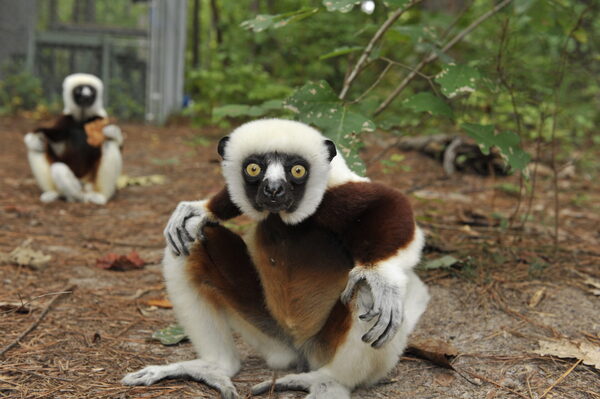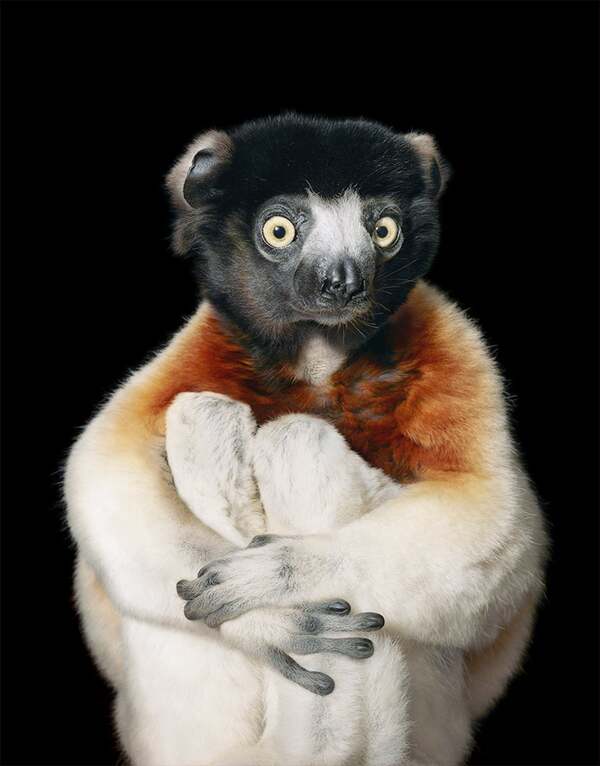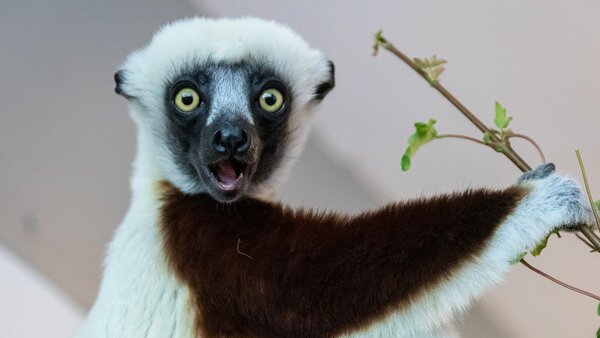Coquerel's sifaka (Propithecus coquereli) is a medium-sized lemur native to the dry forests of northwest Madagascar. Known for its striking appearance and unique behaviors, it is an iconic species that has become a symbol of Madagascar's extraordinary biodiversity. This species, once considered a subspecies of Verreaux's sifaka, is now recognized as a distinct species and is classified as Critically Endangered on the IUCN Red List. This article provides a comprehensive guide to Coquerel's sifaka, exploring its scientific classification, physical characteristics, habitat, behavior, and the current conservation challenges it faces.
Kingdom: Animalia
Phylum: Chordata
Class: Mammalia
Order: Primates
Family: Indriidae
Genus: Propithecus
Species: Propithecus coquereli
Coquerel's sifaka belongs to the genus Propithecus, which includes other species of sifakas known for their vertical clinging and leaping behavior. These lemurs are part of the larger Indriidae family, which also includes the indri and the woolly lemurs.
Named after French entomologist Charles Coquerel, Coquerel's sifaka was first described scientifically in the 19th century. Initially thought to be a subspecies of Verreaux's sifaka, it was later recognized as a distinct species due to differences in its morphology, distribution, and behavior. Despite its earlier classification, its critical conservation status and unique features have made it a focal point for conservationists.

Coquerel's sifaka is a striking lemur with a predominantly white dorsal coat and a maroon patch on its chest and limbs. It has a characteristic face, which is black with a distinct white patch along the bridge of its nose. The eyes are typically yellow or orange, giving it an expressive appearance. The underside of its hands and feet are black, while the thighs, arms, and chest are chocolate brown. The tail is long and white, contributing to its overall elegance.
Body Length: Around 40 to 50 cm (16 to 20 inches)
Tail Length: 50 to 55 cm (20 to 22 inches)
Weight: 4 to 5 kg (8.8 to 11 lbs)
Life Expectancy: In the wild, Coquerel's sifakas can live up to 15 years, though in captivity they can live longer.
Coquerel's sifaka is native to the dry deciduous forests of northwest Madagascar. Its range extends from the Betsiboka River in the north to the Maevarano River in the south, though its distribution is fragmented due to deforestation and habitat degradation.
Habitat: Dry deciduous forests, coastal forests, and sometimes disturbed areas where introduced tree species dominate.
Elevation Range: It is found at altitudes less than 300 meters (984 feet).
The lemur primarily resides in areas with dense vegetation, where it can use its arboreal skills to navigate the treetops. However, habitat fragmentation poses a serious threat to its population, as large sections of its forest home are being cleared for agriculture and human settlements.
Coquerel's sifaka is a diurnal species, meaning it is active during the day. These lemurs are primarily arboreal, spending most of their time in the trees where they move by vertical clinging and leaping. This method of locomotion is an essential aspect of their survival, allowing them to avoid predators and move efficiently through their forested habitat.
Group Size: Coquerel's sifakas live in matriarchal groups of 3 to 10 individuals.
Home Range: Groups have a home range of 4 to 9 hectares (10 to 22 acres), with overlapping territories between groups.
Social Behavior: The species follows a strict social hierarchy with females being dominant over males. Female sifakas have preferential access to food and other resources.
In the wild, Coquerel's sifakas spend a significant portion of their day foraging, with an activity period of 30 to 40% of their time. Mornings, midday, and evenings are when they are most active, foraging for a variety of fruits, leaves, and flowers.

Coquerel's sifaka is an herbivore with a diet that varies based on the season. During the wet season, it consumes immature leaves, fruits, flowers, and bark, while in the dry season, it feeds primarily on mature leaves and buds. These lemurs are known to browse nearly 100 plant species, though they focus their feeding efforts on about 10% of these species.
Diet: Primarily leaves, flowers, fruits, and bark.
Digestive Adaptations: Coquerel's sifaka has an enlarged cecum and an exceptionally long colon to process its fibrous diet effectively.
In captivity, they are often fed sumac and mimosa, which resemble their natural diet.
Coquerel's sifaka has a well-defined breeding season. Females exhibit synchronized estrus in January and February, with infants typically born in the months of June and July. The gestation period lasts around 162 days, and typically only one infant is born at a time.
Infant Weight: Newborns typically weigh between 85 to 115 grams (3 to 4 ounces).
Weaning: Infants are weaned at approximately 6 months of age.
Sexual Maturity: Coquerel's sifakas reach sexual maturity at around 2 to 3.5 years of age.
Coquerel's sifaka is listed as Critically Endangered by the IUCN due to habitat loss, hunting, and the introduction of invasive species such as cats and dogs. The main threats to this lemur's survival include:
Deforestation: The clearing of land for agriculture and charcoal production is a significant issue.
Hunting: Though some local Malagasy traditions prohibit hunting sifakas, this cultural taboo is breaking down, and hunting for bushmeat is increasingly common.
Invasive Species: The introduction of non-native predators has further endangered Coquerel's sifaka, as feral dogs and cats prey on them.
Conservation efforts include the establishment of protected areas such as Ankarafantsika National Park, where a significant population of Coquerel's sifakas is found. However, even these protected areas face threats from habitat degradation and illegal hunting.
Coquerel's sifaka plays an important role in its ecosystem by aiding in seed dispersion, helping maintain the health of its forest environment. In Malagasy culture, these lemurs are considered sacred due to legends of their protective behavior. One popular story tells of a sifaka saving a child who fell from a tree, leading to taboos against harming them. However, these taboos are weakening, and greater cultural awareness is needed to protect the species.
While Coquerel's sifaka does not have direct economic value in the traditional sense, it plays a crucial role in eco-tourism. Its distinctive appearance and behaviors attract tourists to Madagascar, contributing to the local economy. Additionally, as a unique species endemic to Madagascar, Coquerel's sifaka is an important subject for scientific research, particularly in the fields of primate evolution, social structures, and conservation biology.

Coquerel's sifaka shares its genus Propithecus with several other species of sifakas, all of which are known for their arboreal lifestyles and distinctive behaviors. Here’s a comparison table of some of its closest relatives:
| Species Name | Distribution | Body Length | Weight | Conservation Status |
|---|---|---|---|---|
| Coquerel's Sifaka (P. coquereli) | Northwest Madagascar | 40-50 cm | 4-5 kg | Critically Endangered |
| Verreaux's Sifaka (P. verreauxi) | Southwest Madagascar | 40-50 cm | 3-4 kg | Endangered |
| Diademed Sifaka (P. diadema) | Eastern Madagascar | 40-50 cm | 4-5 kg | Endangered |
Coquerel's sifaka is one of Madagascar’s most charismatic and endangered species. With its unique appearance, complex social structure, and vital ecological role, it serves as an important ambassador for the island's diverse wildlife. However, its future remains uncertain due to ongoing habitat loss and hunting. Continued conservation efforts, habitat restoration, and stricter enforcement of laws against hunting are essential to ensuring the survival of this remarkable lemur.
animal tags: Indriidae
We created this article in conjunction with AI technology, then made sure it was fact-checked and edited by a Animals Top editor.